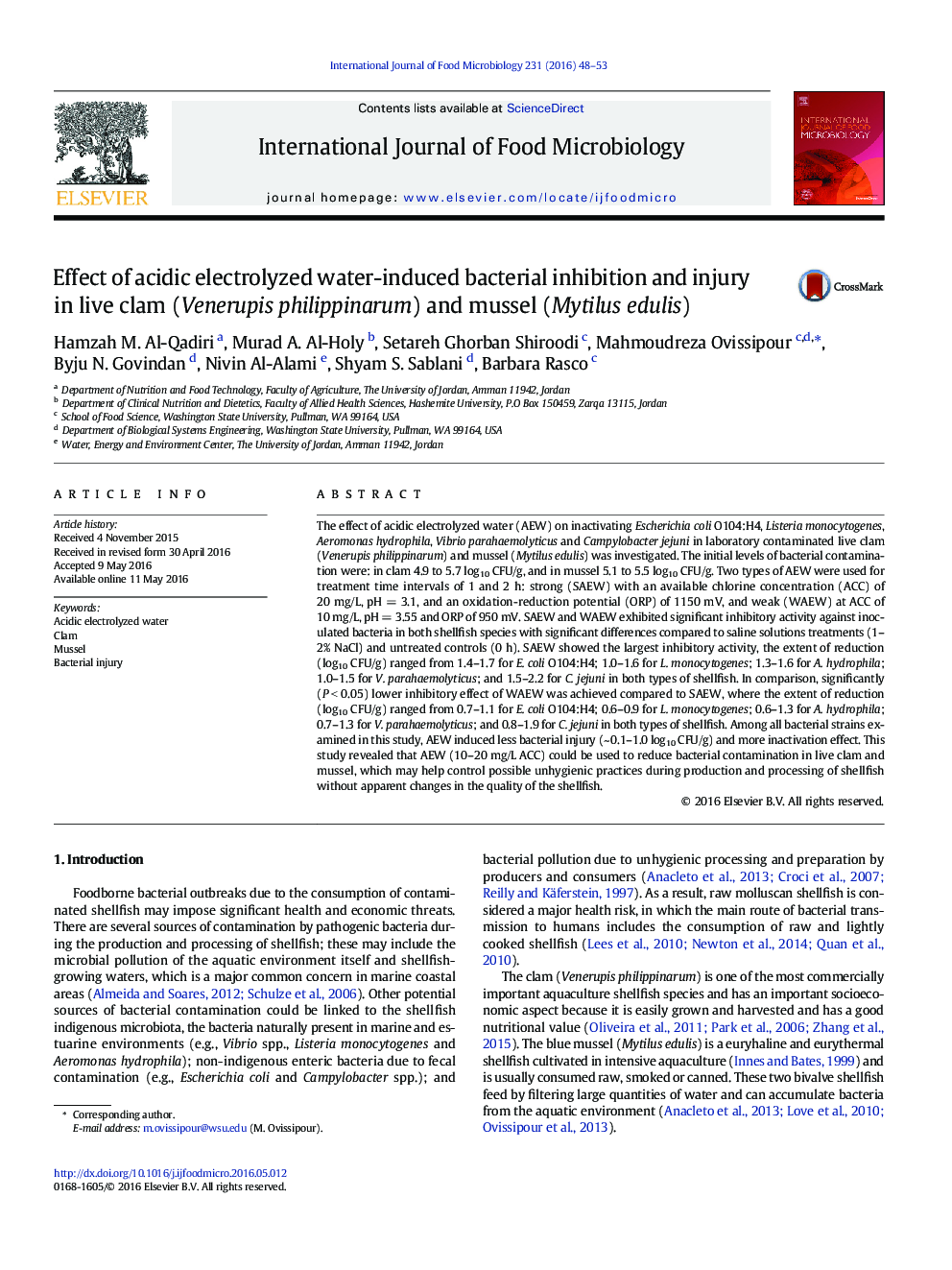| کد مقاله | کد نشریه | سال انتشار | مقاله انگلیسی | نسخه تمام متن |
|---|---|---|---|---|
| 4366213 | 1616552 | 2016 | 6 صفحه PDF | دانلود رایگان |

• Depuration with AEW reduces bacterial contamination in live clam and mussel.
• Depuration with 1–2% NaCl may not cause a reduction in bacterial contamination.
• AEW may help control possible unhygienic practices during processing of shellfish.
The effect of acidic electrolyzed water (AEW) on inactivating Escherichia coli O104:H4, Listeria monocytogenes, Aeromonas hydrophila, Vibrio parahaemolyticus and Campylobacter jejuni in laboratory contaminated live clam (Venerupis philippinarum) and mussel (Mytilus edulis) was investigated. The initial levels of bacterial contamination were: in clam 4.9 to 5.7 log10 CFU/g, and in mussel 5.1 to 5.5 log10 CFU/g. Two types of AEW were used for treatment time intervals of 1 and 2 h: strong (SAEW) with an available chlorine concentration (ACC) of 20 mg/L, pH = 3.1, and an oxidation-reduction potential (ORP) of 1150 mV, and weak (WAEW) at ACC of 10 mg/L, pH = 3.55 and ORP of 950 mV. SAEW and WAEW exhibited significant inhibitory activity against inoculated bacteria in both shellfish species with significant differences compared to saline solutions treatments (1–2% NaCl) and untreated controls (0 h). SAEW showed the largest inhibitory activity, the extent of reduction (log10 CFU/g) ranged from 1.4–1.7 for E. coli O104:H4; 1.0–1.6 for L. monocytogenes; 1.3–1.6 for A. hydrophila; 1.0–1.5 for V. parahaemolyticus; and 1.5–2.2 for C. jejuni in both types of shellfish. In comparison, significantly (P < 0.05) lower inhibitory effect of WAEW was achieved compared to SAEW, where the extent of reduction (log10 CFU/g) ranged from 0.7–1.1 for E. coli O104:H4; 0.6–0.9 for L. monocytogenes; 0.6–1.3 for A. hydrophila; 0.7–1.3 for V. parahaemolyticus; and 0.8–1.9 for C. jejuni in both types of shellfish. Among all bacterial strains examined in this study, AEW induced less bacterial injury (~ 0.1–1.0 log10 CFU/g) and more inactivation effect. This study revealed that AEW (10–20 mg/L ACC) could be used to reduce bacterial contamination in live clam and mussel, which may help control possible unhygienic practices during production and processing of shellfish without apparent changes in the quality of the shellfish.
Journal: International Journal of Food Microbiology - Volume 231, 16 August 2016, Pages 48–53